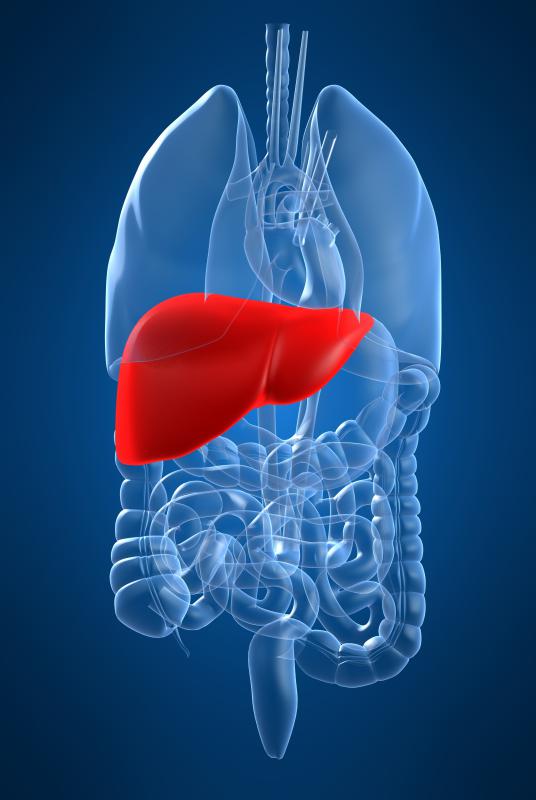At WiseGEEK, we're committed to delivering accurate, trustworthy information. Our expert-authored content is rigorously fact-checked and sourced from credible authorities. Discover how we uphold the highest standards in providing you with reliable knowledge.
What Is the Relationship between the Liver and Homeostasis?
The liver and homeostasis are intricately related in the same manner that most organs help the body maintain order. Homeostasis is driven by a balanced, at-rest state of the body. Each organ plays a role in helping maintain this state of balance. The liver specifically, is sort of the detox center.
Most people know that there are harmful drugs and chemicals that are poisonous. Few, however, realize even everyday foods and the water we drink contain potentially toxic particles. Without the liver, these particles could not be filtered out of our bodies, and homeostasis could not remain.

In addition to detoxification, the liver and homeostasis are also related in other ways. One example is that the liver is involved in the synthesis of many proteins used to structurally support the cells and tissues of the body. Without these proteins, the body simply could not exist, and of course, without the body, homeostasis would be a nominal point of discussion.

In order to understand the role of the liver and homeostasis, it helps to picture the liver as a giant net at the end of a downhill field. As the body goes about its regular processes while living, many particles, or "balls" are produced. Some of these balls are very dangerous if they stay on the field that is the body, but as they roll down toward the net, the liver acts to collect them. These balls are then either forced off the field or turned into a different shape and form that is not so harmful to the playing field. This is a very elementary example of the liver's processing abilities in a more visual sense.

Homeostasis as a word can be broken down to mean body and static. This static state of the human body is not always desirable — one example of this is during extreme physical activity. The body in motion requires a state elevated above the norm, but even this elevated state can achieve a static nature if given time to adjust to its demands. This static nature of an elevated state is termed steady state.
The liver and homeostasis are related in the same sense that the liver helps maintain any steady state. The primary difference is that steady state is static but above baseline. Homeostasis, on the other hand, is static but at the baseline resting state.
AS FEATURED ON:
AS FEATURED ON:













Discuss this Article
Post your comments